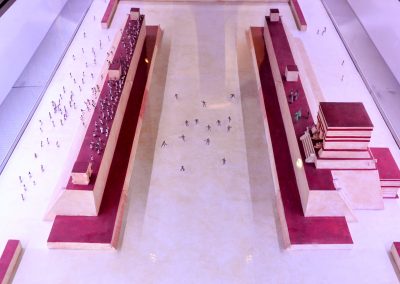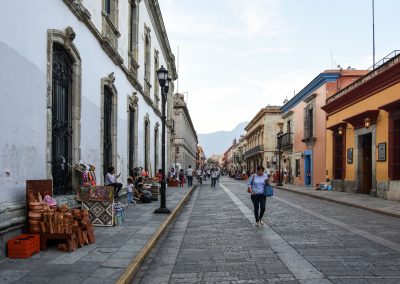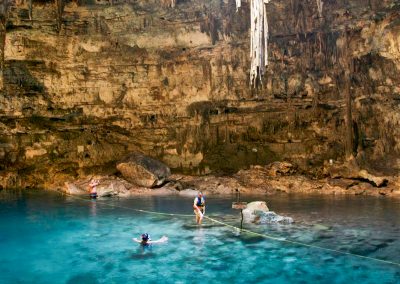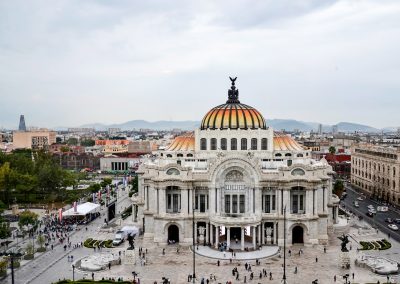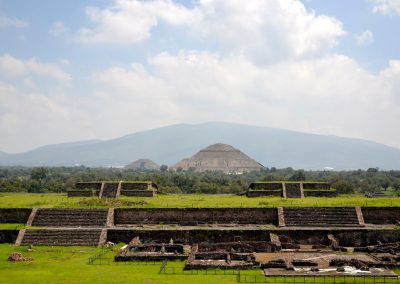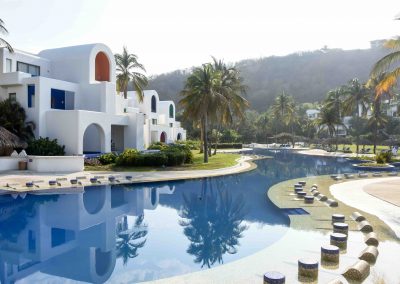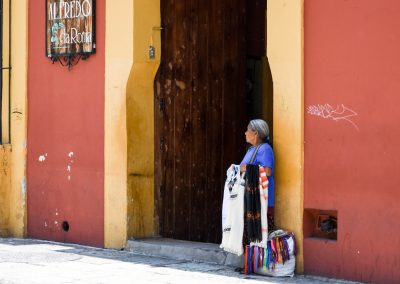For those who don’t know, I lived in the city of Mérida, Yucatán, between January and May 2015, an exchange financed by Santander, Ibero-American program, still when I was in university. There were two main reasons for choosing this city, the first is because it is the safest city in Mexico, the second for all the culture that is found within the city and across the Yucatan peninsula, as well as paradisiacal beaches just a few hours away.
So I leave you here some of the attractions that you can find in the city and surroundings and soon I will write another post about the various attractions, ruins or beaches on the peninsula that I visited and I find it interesting for you to know.
Plaza Grande
This is the central point of Mérida, from which the city grew. It is said that here was a Mayan pyramid and that there would be four more scattered around the city, which were destroyed and its stones used to build several public buildings and the majestic Cathedral of San Ildefonso, the first cathedral to be built on continental America. It is also in this square that we can find the Municipal Palace, the Casa de Montejo (the founders of Mérida), of plateresque architecture, with several exhibitions of Mexican popular art and the Government Palace, where there are murals by Fernando Castro Pacheco that portray the mexican history. Throughout the year, several shows happen in this square, from processions, Carnival parades, fireworks, concerts. Also every Friday at 8 pm, outside the cathedral, there is a “theater” of the Mayan ball game, the pok-ta-pok (that sport from the movie El Dorado, remember?). Also every day, at 9:30 am there are free tours of the city organized by the Tourism Office itself that depart from the Municipal Palace.
In the center we also find the beautiful Church de la 3ª orden, the Peón Contreras Theater and the Santa Lucía Park, with its typical benches, from where free tours also depart daily.
Paseo de Montejo and Monumento a la Patria
The “Champs Elysees” of Mérida, this avenue of French-inspired layout is flanked by large trees and it was here that the most beautiful palaces and mansions of the most important Yucatecans of the 19th century were built, like Palacio Cantón, which was the official residence of the governors of the state for some time and houses, since 1966, the Regional Museum of Anthropology and History, as well as other buildings that currently accommodate boutique hotels, shops and bars (visit Dulcería Colón) . On the same avenue you can appreciate buildings that transport us to another time period: there is the Quinta Montes Molina house museum, the Casa Peón de Regil, of Italian style and a carved stone facade; and Casa Vales, majestic and symmetrical. At almost every step there is an architectural discovery. It receives the name of Francisco de Montejo, Spanish conqueror and founder of the capital of Yucatán. It has a 6km extension, from Santa Ana neighborhood to the Gran Museo del Mundo Maya, passing by the impressive Monumento a la Patria, which tells the country’s history with the shields of each state, completely carved in stone, by the Colombian artist Rómulo Rozo (from this point we pass to Prolongación de Paseo de Montejo, which is no longer of tourist interest). Every Saturday, at Remate de Montejo (the beginning of the avenue), Noche Mexicana takes place at 8 pm with regional music and the sale of food and handicrafts and on Sundays, Paseo de Montejo is closed to traffic from 8am to 12pm, ideal to visit the art market that is established there.
El Gran Museo del Mundo Maya
In the north of the city is the Great Museum of the Mayan World, a building of contemporary architecture that resembles a ceiba, the sacred tree of the Mayan culture, designed by 4A Arquitectos and which houses the history of the Maya from the past until now ( yes, there are still many people who identify themselves as Mayan, who continue to speak the language, etc.). And obviously we also find here the history of the ancestral Mayan, those of the ruins of Chichén Itzá and Tulum, the polytheists who believed that there are three stages – earth, heaven and underworld -, who believed in blood sacrifices, who were super advanced in mathematics and astronomy and who had their own calendar, the Mayan who drew as writing. It also includes several temporary exhibitions (when I went it was about the meteorite that is believed to have extinguished the dinosaurs, which fell exactly in the Yucatán Peninsula). The museum does not open on Mondays and has an entrance fee of 150$MX for foreigners.
Mercado Lucas Valdéz
We are in Mexico, everything is different, so we must visit a market! And the ideal is the central market in Mérida, also known as Lucas Valdéz. Here you can find everything: tamales of all flavors, jewelery with live insects (known as Maquech), fruits and vegetables, meat and fish exposed to the air, huipiles and guayaberas (typical costumes), baskets and textiles. An explosion of colors and flavors that cannot be missed!
Around the city I also recommend the Santiago and Santa Ana markets to try one of the typical Yucatecan dishes (I recommend the Cochinita Pibil tacos or the Papadzules), accompanied either by a fresh Mexican beer (Indio and Negra Modelo are my favorites) or a flavored water, so typical of Mexico (start with jamaica water and try other flavors too).
Cemetery
It may seem strange to visit a cemetery, but the truth is that the way you look and celebrate death is different from culture to culture and in Mexico this celebration of death is very famous! In fact, in the General Cemetery of Mérida, located in Calle 81A x 90, the “festive” aspect is less noticeable than the architectural aspect. Is that the cemeteries in Mexico are very colorful! And disorganized! And in some places even human bones are found. Undoubtedly something interesting to do.
Progreso Beach
At about 40km from Mérida we find Progreso Beach. Compared to the beaches on the Riviera Maya, it is not so fantastic, but for those who live in Mérida or are passing through and want to sunbath, it is the closest one. The Gulf of Mexico has a more greenish tone, very little paradisiacal. To get there, go to Autoprogreso Terminal, which is located on Calle 62 between 65 and 67, and take the bus that goes to Puerto Progreso. It takes about an hour to get there and then you have to walk about four blocks to get to the beach. But for us Progreso’s biggest attraction is a restaurant called Eladios, which has a different concept – you can order a drink (usually one of the national beers) at a price a little more expensive than normal, but which includes dozens of typical plates (or botana, as they call it). And it’s right in front of the beach, so you can spend an entire afternoon looking at the sea, while eating and drinking the most yucatecan food there is!



Dzibilchaltún
Finally, halfway to Progreso, we find the ruins of Dzibilchaltún. This Mayan name means “Place where there are scriptures on the stones”, in reference to the numerous commemorative plaques found in this archaeological site, also called stelae. According to experts, there have been settlements since 500 BC or earlier, and it lasted until the Spanish conquest around 1540 A.D. The city preserves 12 sacbés (sak bé oob) or white paths; one of them takes us to the Xlakáh cenote, one of the largest and deepest found in Yucatán to this day (cenotes are underground rivers exclusive from this region, which can surface either in caves or as if they were lakes). The most important building is the Temple of the Seven Dolls or Temple of the Sun. It has these names because when it was found there were seven figures in clay with human form and because in the equinoxes (March and September 21st), when the sun rises, it crosses perfectly through the door of the temple, proving the incredible precision of Mayan astronomy integrated in its architecture. To get here, you can also take a bus at the same Terminal as to Progreso, in the center of Mérida.
If you liked this post and want to read more about my trips to Mexico, you can visit the following posts:























































